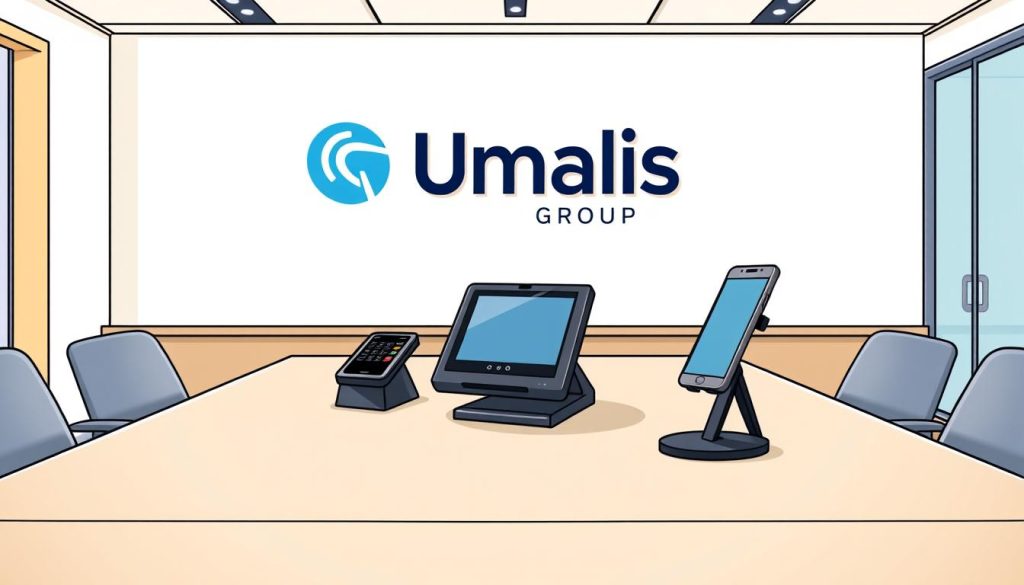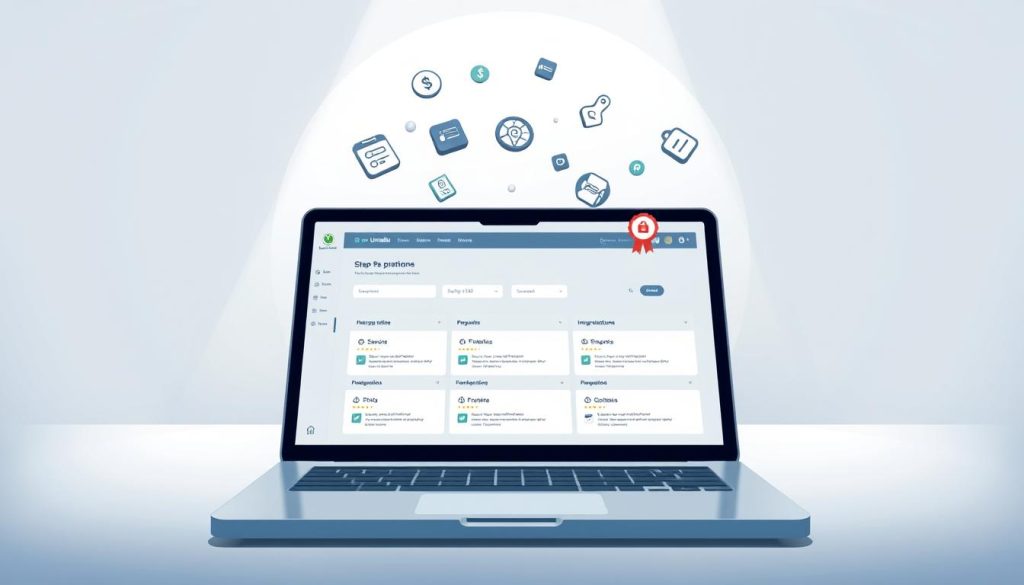Did you know that French e-commerce sales reached over €150 billion last year? Yet nearly 30% of shopping carts are abandoned at checkout due to payment processing issues. This staggering statistic highlights a critical challenge for businesses operating in France’s competitive digital marketplace.
Choosing the right payment system can make or break your business success. French companies face unique hurdles, from local customer preferences to strict European compliance standards. A seamless checkout experience isn’t just nice to have—it’s essential for conversion rates and customer loyalty.
This guide cuts through the complexity of payment processing in France. We’ll compare leading platforms like PayPal, Stripe, and Shopify Payments to help you find the perfect fit. Whether you run an e-commerce store, B2B service, or hybrid business, the right choice can dramatically boost your bottom line.
You’ll discover how to balance security with user experience while meeting local requirements. We’ll also highlight common pitfalls to avoid and emerging trends in the European payment landscape. By the end, you’ll have clear, actionable insights to implement a system that works for your specific needs.
Table of Contents
Key Takeaways
- French e-commerce faces significant cart abandonment due to payment issues
- The right payment platform directly impacts conversion rates and customer satisfaction
- French businesses must navigate local preferences and EU compliance requirements
- Leading platforms offer different advantages for various business models
- Balancing security with user experience is crucial for success
- Implementation choices can significantly affect transaction costs and profitability
- Staying current with European payment trends provides competitive advantages
Introduction: Setting the Stage for Secure Payments in France
A customer’s journey through your French e-shop culminates in a moment of truth: the checkout. This final step is where trust is either solidified or broken. Getting it right is essential for turning visitors into loyal buyers.
Why Secure Payment Methods Matter
Secure transaction methods form the backbone of any successful digital store. They directly impact customer confidence, conversion rates, and your business’s long-term reputation. A smooth and safe financial process makes customers significantly more likely to complete their purchase.
They are also more likely to return for future transactions. Choosing the right infrastructure is a critical business decision. The consequences of a poor choice extend beyond simple inconvenience.
Understanding French E-Commerce Needs
French consumers have specific expectations. They prefer familiar transaction options, strong privacy protections, and seamless mobile experiences that meet European standards. Understanding these unique needs is key.
This means considering local banking relationships and preferred systems like Carte Bancaire. Compliance with European regulations, including PSD2, is non-negotiable. A well-chosen system provides valuable insights and fraud protection.
It also offers the flexibility to scale as your business grows. The checkout experience can make or break a sale. A streamlined, trustworthy process is a powerful tool for boosting completion rates and building a strong brand in France.
What Are Online Payment Solutions and How Do They Work?
Behind every successful purchase lies a carefully orchestrated system of verification and transfer. These systems handle the complex journey from customer authorization to funds reaching your account.
Defining the Payment Process
The transaction flow follows several critical steps. First, a customer enters their credit card details. This information gets encrypted and sent to a processor.
The processor communicates with the customer’s bank to verify available funds. Once approved, the funds move to your merchant account. This entire process happens in seconds.
Each step includes multiple security checks. These protect both your business and the customer from fraud.
Overview of Integration and Compliance
Choosing the right platform involves understanding integration options. Some systems offer simple plug-and-play setup. Others provide advanced API connections for custom experiences.
Compliance with security standards is non-negotiable. Every legitimate solution must meet PCI-DSS requirements. European businesses need additional GDPR compliance.
Finding the best payment solution depends on your technical capabilities and business needs. The right choice balances security with user experience.
Online Payment Solutions Compared: Features, Pricing, and Security
Modern businesses face a complex landscape when selecting the right financial infrastructure for their operations. The market offers numerous options, each with distinct advantages that can impact your success.
Key Benefits of Using a Dedicated Payment Platform
Dedicated platforms provide significant advantages over basic credit card processing. They offer integrated fraud protection and detailed sales analytics.
These systems automate accounting reconciliation and accept diverse methods from one interface. This saves valuable time and reduces errors.
| Feature | Basic Processing | Dedicated Platform | Premium Solution |
|---|---|---|---|
| Fraud Protection | Basic | Advanced | Enterprise-grade |
| Analytics | Limited | Comprehensive | Customizable |
| Payment Methods | Credit cards only | Multiple options | Global coverage |
| Integration | Simple | Seamless | API-driven |
As one industry expert noted,
The right platform transforms transaction handling from a chore into a strategic advantage.
How Pricing Structures Impact Your Business
Pricing varies dramatically between providers. Most charge percentage-based fees plus fixed amounts per transaction.
Understanding true costs means looking beyond advertised rates. Hidden fees can include monthly minimums and international surcharges.
The best payment solution depends on your transaction volume and business model. High-volume businesses may benefit from interchange-plus pricing.
Security features are non-negotiable. All reputable options include PCI-DSS compliance and real-time fraud detection.
Key Considerations When Choosing a Payment Platform

Selecting the right financial infrastructure for your French business requires careful evaluation of several interconnected factors. The ideal choice balances customer convenience with robust security and operational efficiency.
Evaluating Accepted Payment Methods and Integration Ease
The range of payment methods available is crucial. French consumers often prefer local options, while international buyers expect credit cards and digital wallets. Your platform must support the methods your target audience actually uses.
Integration ease is equally important. Look for systems with no-code setup wizards or pre-built plugins if you lack a developer. This allows you to start processing transactions quickly. The best platforms offer flexible implementation for various use cases, from simple online stores to complex B2B services.
Ensuring Robust Security and Fraud Protection
Security is a non-negotiable foundation. Every processor must be PCI-DSS compliant. Go beyond the basics by seeking advanced fraud detection that uses machine learning.
These systems analyze behavior to block suspicious activity without frustrating legitimate customers. Also, consider the platform’s relationship with your bank, as this can impact fund transfers and local support. A secure system protects your revenue and builds customer trust.
Detailed Comparison: PayPal vs. Stripe
The choice between PayPal and Stripe often comes down to a trade-off between immediate simplicity and long-term flexibility. Both platforms serve French businesses well but cater to different needs and technical capabilities.
PayPal: User-Friendly Experience and First-Time Advantages
PayPal stands out as the best payment option for beginners. You can set up the Smart Payment Button in minutes without coding knowledge.
The platform’s trusted name boosts customer confidence at checkout. Shoppers recognize the familiar brand and feel comfortable completing their transaction.
Users can pay from their PayPal wallet or enter credit card details securely. However, the pricing structure can be confusing with varying rates.
Stripe: Advanced Analytics and API Integration
Stripe offers the best payment platform for businesses wanting data insights and customization. It requires more technical skill but provides powerful tools.
The system delivers deep analytics on sales volume and fraud patterns. These insights help you understand customer behavior and optimize your transaction process.
You can choose from three integration methods to match your technical comfort level. The straightforward 2.9% + $0.30 per credit card transaction makes costs predictable.
Detailed Comparison: Shopify Payments vs. Square
When building your digital storefront, the choice between Shopify Payments and Square represents two distinct paths to business growth. Each platform caters to different merchant needs while simplifying the financial side of operations.
Shopify Payments: Seamless E-Commerce Integration
Shopify Payments offers an all-in-one experience perfect for dedicated online store owners. Starting at $39 monthly, it combines website hosting, marketing tools, and payment processing in one streamlined platform.
The native integration means your store inventory automatically syncs with the payment system. When you add new products, the checkout process updates instantly. This saves significant time compared to managing separate systems.
Transaction fees begin at 2.9% + $0.30 and decrease with higher subscription tiers. The beginner-friendly approach includes extensive tutorials and support resources.
Square: Combining Online and Offline Sales
Square excels for businesses blending digital and physical sales channels. The platform offers unified pricing and reporting for both online transactions and in-person card reader payments.
Each credit card transaction costs 2.9% + $0.30. Square provides customizable buy buttons and a free website builder with beautiful themes. This makes it ideal for retailers expanding their store presence across multiple channels.
The system automatically syncs inventory, sales data, and customer information between online and offline operations. This creates a seamless experience whether customers shop from home or visit your physical location.
Detailed Comparison: HubSpot Payments vs. Helcim
When your business requires either deep CRM integration or volume-based pricing savings, HubSpot Payments and Helcim emerge as compelling choices worth examining. These platforms serve distinct business models with specialized features.
HubSpot Payments: Simplifying B2B Transactions
HubSpot Payments excels for B2B service companies and agencies already using the CRM ecosystem. The platform charges 2.9% per transaction with no extra fees, though it requires an active HubSpot CRM Starter subscription starting at $20 monthly.
This solution transforms deals into payment links that embed anywhere—emails, proposals, or websites. The seamless integration means you track the entire customer journey from contact to payment.
Critical warning: Don’t connect an existing Stripe account, or you’ll pay both apps’ fees totaling 3.4% + $0.30 instead of 2.9%.
Helcim: Benefits of Interchange Pricing and Volume Savings
Helcim stands out as the best payment provider for high-volume businesses. Its Interchange Plus pricing averages 2.49% + $0.25 per transaction, noticeably lower than standard flat rates.
This model means you pay actual card network fees plus Helcim’s transparent markup. Volume-based discounts make it increasingly economical as your company grows.
Both platforms prioritize user experience but serve different needs. HubSpot integrates payments with CRM workflows, while Helcim focuses on cost-effective transaction processing for merchants seeking the best payment solution for scale.
Overcoming Common Pitfalls in Payment Platform Selection
Choosing a payment platform involves more than just comparing advertised rates—it requires digging into the fine print. Many businesses discover unexpected costs and limitations only after implementation.
Being aware of common red flags helps you select a system that truly supports your growth.
Identifying Hidden Fees and Complex Pricing
Fee structures often contain surprises beyond the basic transaction percentage. Providers may charge extra for chargebacks, international sales, or premium card types.
Carefully review the complete fee breakdown before committing. Monitor your actual charges during the first months to catch discrepancies early.
| Fee Type | Typical Cost Range | Business Impact |
|---|---|---|
| Monthly Minimum | $25-$100 | Fixed cost regardless of sales volume |
| International Transaction | 1-3% additional | Reduces profit on cross-border sales |
| Currency Conversion | 2-4% markup | Affects pricing for global customers |
| Chargeback Fee | $15-$25 per case | Adds cost to disputed transactions |
Ensuring Quality Customer Support and Technical Assistance
Reliable customer support is essential when issues arise. Evaluate which channels each payment provider offers—email, live chat, or phone.
Check their availability hours and response times. Businesses without technical teams depend heavily on this service.
Your banking relationship also matters. Some providers work better with specific banks or offer faster fund transfers.
Time delays in fund availability can impact your cash flow significantly. Choose a provider that aligns with your financial needs.
Innovative Trends in Payment Systems for French and European Markets
Innovation in transaction processing is accelerating across Europe, offering businesses new opportunities to enhance customer experiences. The European payment landscape continues to evolve with technologies that balance security and convenience.
These advancements help merchants stay competitive while meeting regulatory requirements. Understanding these trends is essential for any business operating in France’s dynamic market.
Adopting Modern Fraud Protection and Security Measures
Modern fraud detection has moved beyond basic verification methods. Today’s systems use machine learning to analyze hundreds of data points per transaction.
This approach identifies suspicious patterns while reducing false positives that frustrate legitimate customers. Advanced payment systems now offer real-time protection without slowing down checkout.
Instant payment options like SEPA Instant Credit Transfer are gaining popularity across Europe. These solutions provide immediate fund availability while maintaining strong security.
Buy-now-pay-later services and mobile wallets continue to reshape consumer expectations. People increasingly expect flexible options at checkout, driving innovation in payment systems.
Artificial intelligence is transforming how businesses handle payments and prevent fraud. These intelligent solutions learn from millions of transactions to adapt to new threats in real-time.
Implementation and Integration: Getting Started with Your Payment Platform

Getting started with payment integration is simpler than many entrepreneurs realize. The right approach depends on your technical comfort level and business needs.
Modern platforms offer multiple paths to implementation. You can choose what works best for your situation.
No-Code Integration and Setup Tips
Most providers now offer no-code options that make setup accessible to everyone. These tools provide everything you need without programming knowledge.
Platforms like Stripe feature implementation wizards that guide you through each step. You answer simple questions about your business model.
The system then generates customized instructions with code snippets. You can copy and paste these directly into your website.
« The best payment platforms remove technical barriers, letting business owners focus on what they do best. »
Testing is crucial before going live. Use sandbox environments to simulate transactions with fake card numbers. This ensures your checkout process works smoothly.
| Integration Method | Technical Skill Required | Setup Time | Best For |
|---|---|---|---|
| No-Code Wizard | None | Under 1 hour | Small businesses, beginners |
| Pre-built Plugins | Basic | 1-2 hours | WordPress, Shopify users |
| API Integration | Advanced | Days to weeks | Custom applications, developers |
Connecting Your Platform with Other Business Tools
Your payment platform connects to other systems to create powerful workflows. This automation saves time and reduces errors.
Integration marketplaces and tools like Zapier expand connection possibilities. You can link your payment system to hundreds of applications.
Successful transactions can trigger automatic actions. These include adding customers to email lists or updating inventory counts.
Test the checkout experience from your customer’s perspective. Verify that payment buttons display correctly on all devices. A smooth process builds trust and completes sales.
Conclusion
The decision-making process for selecting the ideal financial infrastructure represents a pivotal moment for any company operating in the French market.
Throughout this guide, we’ve explored how different platforms serve distinct use cases. Each offers unique advantages depending on your business model and technical needs.
The best online payment solution for your specific situation depends on multiple factors. Consider your transaction volume, customer preferences, and integration requirements carefully.
Don’t let over-analysis delay your progress. Modern platforms make it easy to get started, and you can always adjust your choice as your business evolves.
Security remains non-negotiable regardless of which option you select. This blog has provided everything need to make an informed decision.
Now it’s time to take look at your options and move forward with confidence.
FAQ
What are the most popular transaction methods used by customers in France?
In France, shoppers frequently use credit cards like Visa and Mastercard. Digital wallets, such as PayPal and Apple Pay, are also very common. Many people prefer local options like Carte Bancaire. Offering these choices helps ensure a smooth checkout experience for everyone.
How can I protect my business and customers from fraud?
Choosing a provider with strong security is key. Look for systems that use advanced encryption and tools to detect suspicious activity. Features like 3D Secure add an extra step to verify a customer’s identity, helping to prevent unauthorized transactions.
Is it difficult to integrate a new payment system into my online store?
Many platforms are designed for easy setup. Providers like Stripe and Shopify Payments offer clear guides and simple plugins. This means you can often get started without needing deep technical knowledge, connecting your store quickly.
What should I look for in a company’s customer support?
Great support is fast and helpful. Check if the provider offers live chat, phone, or email assistance. It’s also smart to see if they have a detailed blog or knowledge base for self-help, ensuring you can resolve issues any time they pop up.
Are there specific rules for European payment processing I need to know?
A> Yes, compliance with regulations like PSD2 is important for businesses in Europe. This involves strong customer authentication. A good provider will handle these requirements for you, making sure every transaction meets the necessary legal standards.





